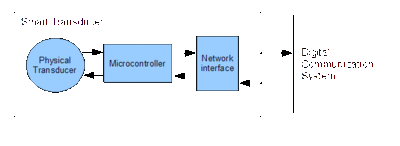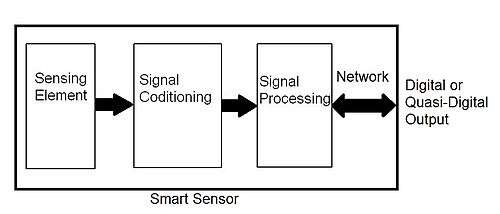Smart transducer

A smart transducer is an analog or digital transducer or actuator combined with a processing unit and a communication interface.[1]
As sensors and actuators become more complex they provide support for various modes of operation and interfacing. Some applications require additionally fault-tolerance and distributed computing. Such high-level functionality can be achieved by adding an embedded microcontroller to the classical sensor/actuator, which increases the ability to cope with complexity at a fair price.
In the machine vision field, a single compact unit which combines the imaging functions and the complete image processing functions is often called a smart sensor.
They are often made using CMOS, VLSI technology and may contain MEMS[2] devices leading to lower cost. They may provide full digital outputs for easier interface or they may provide quasi-digital outputs like pulse width modulation.

Advantages
- Compact
- Higher reliability
- Lower cost
- Can be done using existing cmos processes
- Ease of use
- electronic data storage
- self indication
- auto correction
- auto display
See also
- IEEE 1451
- Transducer electronic data sheet
- TransducerML
- SensorML
- http://spectrum.ieee.org/computing/hardware/smart-sensors
References
- ↑ Elmenreich, W. (2006). "Time-triggered smart transducer networks" (PDF). IEEE Transactions on Industrial Informatics (2(3)). p. 192–199.
- ↑ http://ieeexplore.ieee.org/xpl/freeabs_all.jsp?arnumber=6011700